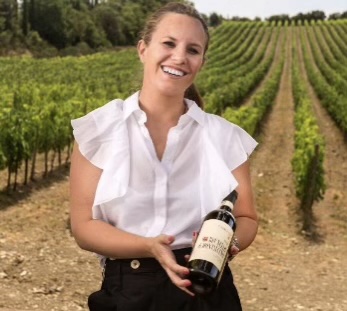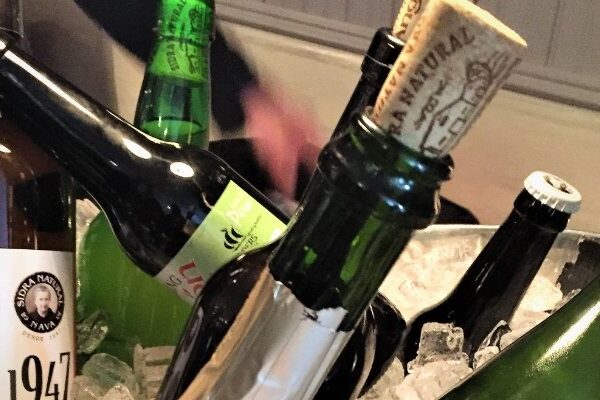
Le Pievi: Nobile per il suo passato, moderno nelle sue scelte
Le Pievi: Noble for its past, modern in its choices
Le Pievi Enhances Vino Nobile di Montepulciano Prominence
The Italians are at it again. This time, the spotlight is on Vino Nobile di Montepulciano DOCG, one of Tuscany’s most historically significant wine regions. Recognized as a DOCG (Denominazione di Origine Controllata e Garantita) since 1980, Vino Nobile di Montepulciano is celebrated for its quality and deep-rooted tradition. To further elevate the region’s profile and highlight its unique terroir, the new Le Pievi designation has been introduced.
Developed by the Consorzio del Vino Nobile di Montepulciano, this designation links wines to twelve historic parish zones (pievi) within Montepulciano in order to emphasize terroir, authenticity, and quality. Decades of research into the region’s unique geography laid the foundation for this initiative, with formal approval granted by Italy’s National Wine Committee in October 2024. Positioned above the Riserva category, the Pieve classification highlights site-specific characteristics, traditional grape varieties, and stricter production standards, aligning with market demand for greater transparency and a deeper connection to origin. The first wines under this label, from the 2021 harvest, debuted in 2024 and will continue rolling out into 2025.
Complexity or Transparency
The new Italian wine category, Le Piev, is not intended to make wine selection more complex, though it may initially seem that way to consumers unfamiliar with the context. Rather, it’s part of Italy’s ongoing effort to emphasize quality, origin, and historical identity in its wines.
Why does anyone need another term for a wine zone? Is it meant to make understanding of Italian wines more or less unique or interesting? It depends on who you ask. Pieve is an old term referring to a rural parish with deep historical roots in Tuscany. The Le Pievi wines must come from one of 12 defined subzones, each centered around an ancient pieve area. From both a consumer and wine producer point of view, this new term links the wines made in this locale directly identified by its geographical and cultural roots.
Perception
Italian wine laws are not only complex but also highly structured and strictly regulated to preserve the quality, authenticity, and regional identity of the wines. The laws are enforced by the Italian Ministry of Agriculture and regional consortia, ensuring compliance with production methods, geographic origin, and quality standards. Fortunately, casual drinkers can still enjoy Vino Nobile without knowing all the details. For enthusiasts and professionals, the new designation brings valuable geographic precision and quality assurance, making the region more transparent and globally competitive.
Standards of Quality
Le Pievi serves as a unique tier within Vino Nobile, signaling to wine enthusiasts and collectors that a wine has a specific origin and elevated quality. In the long run, this should help consumers make more informed choices — provided they understand the system.
The category imposes stricter production rules than standard Vino Nobile:
- Minimum 85% Sangiovese (locally called Prugnolo Gentile)
- Longer aging: minimum 36 months, including 12 in oak and 12 in bottle
- Organic farming is mandatory
- Only select vineyard plots (registered in a special registry) can qualify
This approach mirrors the classification systems used in regions like Barolo, Barbaresco, and Chianti Classico, where wines are increasingly identified by MGA (Menzioni Geografiche Aggiuntive, or crus) and UGA (Unità Geografiche Aggiuntive, or additional geographic units). Italy is steadily refining its appellation system to highlight micro-regional expressions of terroir, much like Burgundy’s use of climats and lieux-dits.
Different, Similar or Public Relations
Le Pievi wines, especially those from the new “Pieve” category in Vino Nobile di Montepulciano and other selected Tuscan regions are differentiated by both their taste experience and their price point compared to broader Italian wines.
Taste Experience
Le Pievi wines are crafted to express the unique terroir of their specific subzone, resulting in distinctive sensory profiles. Because the Pieve designation requires grapes from a single subzone and a high percentage of Sangiovese (at least 85%), the wines are intended to reflect the nuances of their specific vineyard sites, showcasing differences in soil, microclimate, and traditional winemaking.
Le Pievi wines deliver an intense and layered aromatic profile, think blackcurrant, black cherry, blackberry, sweet spice, licorice, violet, with hints of tobacco, blue flowers, and forest floor. On the palate, expect ripe dark fruit, juicy acidity, and fine, polished tannins, all wrapped in a rich, elegant, and velvety mouthfeel. Savory, spicy, and mineral notes linger on the finish, creating a wine that’s both balanced and persistent. Le Pievi offers immediate appeal as well as impressive aging potential, with complexity and refinement rivaling top Riservas and even Brunello di Montalcino.
Price Differentiation
Le Pievi wines are positioned at the top of the Vino Nobile di Montepulciano quality pyramid, above Riserva. They are priced accordingly, typically in the $50–$70 range in the US market, with some examples reaching $90–$120 for top bottlings.
Le Pievi is Different
| Feature | Le Pievi Wines | Standard Italian Reds (e.g., DOC, IGT) |
| Vineyard Source | Single subzone (Pieve), strict terroir | Often blended from multiple sites |
| Grape Composition | 85%+ Sangiovese, no international varieties | May include international grapes, less strict |
| Aging | Minimum 3 years, including wood and bottle | Varies, often shorter for non-Riserva wines |
| Taste Profile | Complex, layered, site-expressive | Can be simpler, less site-specific |
| Price Range (US) | $50–$120 | $15–$70 (most between $20–$40) |
Comparison to Other Italian Wines
| Feature | Le Pievi Wines (Vino Nobile di Montepulciano Pieve) | Typical Italian Reds (e.g., Chianti, Barbera, Primitivo) |
| Aromatics | Dark, meaty, gamey, peppery spice, exotic spice, orange zest, salinity, integrated oak, floral notes | Fruity (cherry, raspberry, blackberry), floral (violet, rose), earthy, licorice, leather, sometimes herbal25 |
| Palate | Balanced, fresh, supple, fine tannins, mineral, persistent finish, evolving complexity | Can be lighter, fruitier, more straightforward, with juicy acidity or bold tannins, less site-specific nuance25 |
| Terroir Expression | Strong, tied to specific Pieve subzone, reflects microclimate and soil | Varies widely, often blended from multiple sites or regions2 |
InMyPersonalOpinion.Life
I recently attended a Master Class and Guided Tasting event in Manhattan that was presented by Antonio Galloni, Founder, Vinous, and a noted wine critic. I was impressed and delighted by the following wine:
1. Pieve Sant ’Albino Vine Nobile di Montepulciano DOCG 2021. Vigneto Poggio Sant ‘Enrico Grande
The 2021 Vino Nobile di Montepulciano DOCG Pieve Sant’Albino represents a landmark release, marking the inaugural vintage of Montepulciano’s new Pieve designation. This wine exemplifies the intersection of tradition and terroir-driven innovation, highlighting the unique characteristics of the Sant’Albino subzone.

Caterina Sacchet is the winemaker at Carpineto and the daughter of co-founder Giovanni Carlo Sacchet, representing the winery’s second generation. She studied enology and viticulture at the University of Florence. As lead winemaker, she emphasizes environmental sustainability, biodiversity, and minimal intervention, integrating these principles into Carpineto’s approach to produce high-quality wines that reflect their terroir.
Vinicultural Context
The 2021 vintage of Vino Nobile di Montepulciano Pieve Sant’Albino originates exclusively from the Sant’Albino subzone, situated within the Montepulciano DOCG. This vineyard spans 3.65 hectares, featuring diverse soils, including sandy clays and silts, with some vineyards characterized by distinctive blue or red clay. The wine is 100 percent Sangiovese wine. This single-vineyard bottling is part of Carpineto’s Appodiato series, which focuses on showcasing the pure expression of Sangiovese from specific vineyard sites. The wine undergoes a minimum aging period of 36 months, including at least 12 months in new 225-liter French and American oak barrels and bottle aging in Carpineto’s temperature–controlled underground cellar, aligning with the stringent standards of the Pieve classification.
Vineyard & Terroir
The Poggio Sant’Enrico Grande vineyard spans 3.65 hectares and is situated at elevations between 300 and 350 meters above sea level, just outside the town of Montepulciano. The vineyard is characterized by deep sedimentary soils with sandy clay and limestone layers. South-facing slopes provide optimal sun exposure, contributing to the ripening of the grapes. Planted in 1995, the vineyard utilizes Sangiovese clone SS-F9-A grafted onto 420A rootstock, with a planting density of 4,464 vines per hectare.
Tasting Notes
The deep garnet hue with violet reflections showcases the wine’s youth and
concentration. A complex bouquet unfolds with blackcurrant, smoked licorice, and wild
cherry, layered with tertiary notes of eucalyptus, tobacco leaf, and forest floor. Subtle vanilla
and clove from oak integration add polish without overshadowing the fruit.
The wine is structured yet elegant, with a velvety texture and ripe tannins that frame flavors of cherry, blackberry compote, and crushed violet. The mid-palate introduces minerality (wet slate) and savory herbs (rosemary, thyme), leading to a finish marked by black pepper and cedar.
The acidity is vibrant but balanced, ensuring freshness despite the wine’s density. Full-bodied with a silky, enveloping mouthfeel and persistent length the alcohol (14%–14.5%) is well-integrated, contributing warmth without heat.
Decanting: Recommend 2–3 hours to soften tannins and unlock tertiary nuances.
Priced as a premium ($65 – $95) wine, it competes with mid-tier Brunello di Montalcino but distinguishes itself through terroir transparency and the Pieve system’s rigor.




